Samsung SSD 850 Pro (128GB, 256GB & 1TB) Review: Enter the 3D Era
by Kristian Vättö on July 1, 2014 10:00 AM ESTPerformance vs. Transfer Size
ATTO is a useful tool for quickly benchmarking performance across various transfer sizes. You can get the complete data set in Bench. To highlight the performance of each capacity, I decided to divide the ATTO graphs by each capacity, which should also make the graphs a bit more readable.
IO size scaling remain very similar to the 840 Pro and EVO. It is only at the 128GB capacity where the V-NAND provides a substantial advantage and the 850 Pro is almost as fast as the 120GB Intel SSD 525, which is a SandForce based drive, so its high performance is explained by ATTO's use of compressible data.


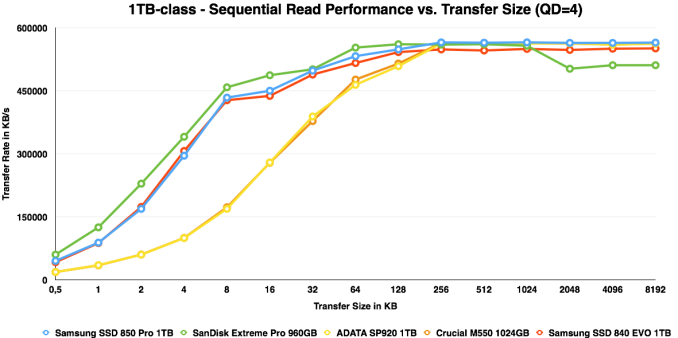

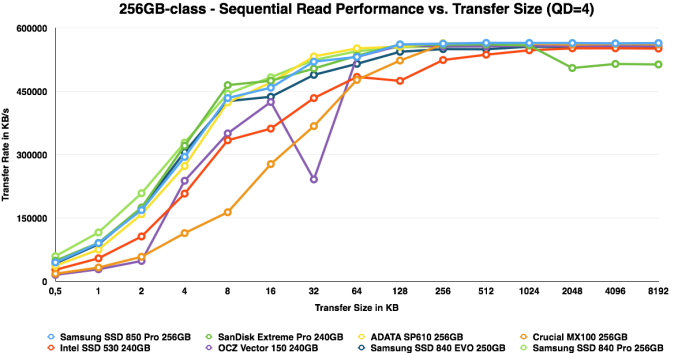
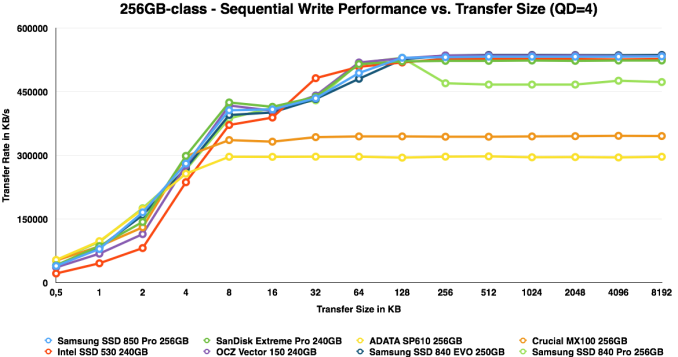
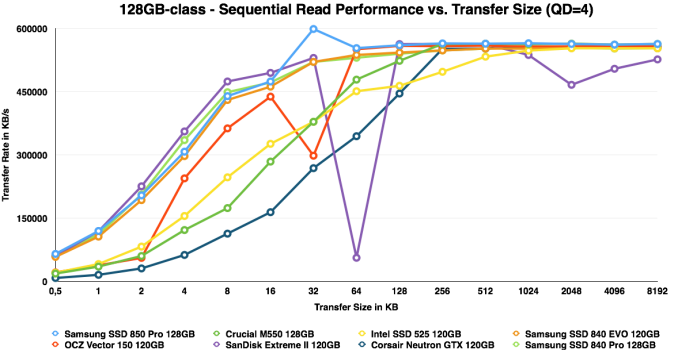
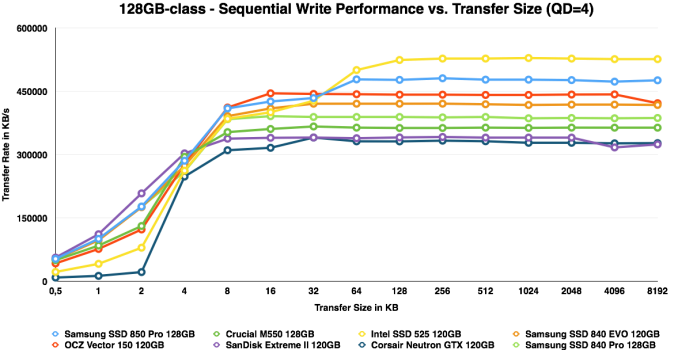








160 Comments
View All Comments
Pastuch - Wednesday, July 2, 2014 - link
When will we see Vnand in smart phones? This 16gb Nexus 5 is brutal! Always out of space.ajlueke - Wednesday, July 2, 2014 - link
Page 1, "Scaling below 20nm was seemed", I believe you intended "Scaling below 20nm was seen".Automaticman - Wednesday, July 2, 2014 - link
Can current EVO 840 users upgrade to Magician 4.4 and get the benefits of RAPID 2.0 (assuming they have >16GB DRAM)?bsd228 - Wednesday, July 2, 2014 - link
just as RAPID support was extended to the 840 PRO, I would expect this to support the 840 pro/evo soon, if not right off the bat.Automaticman - Sunday, July 6, 2014 - link
Well, I was certainly able to upgrade to Magician 4.4, and it did take a couple reboots while it was re-activating RAPID. I am going to guess and say yes it seems to be the new version of RAPID, but I don't see anywhere that it actually says RAPID 2.0 or any indication of how much memory it has available.sirvival - Wednesday, July 2, 2014 - link
Ah ok.When I select the 470 in Bench there is no slumber so I got confused.
Since power cosumption is a big thing in Mobile could you do the following:
Bench the impact on the Battery of a Laptop due to a fast drive.
E.g. drive A is fast but has the downside that it draws more under load as drive B which is slower. But since its done faster it returns to idle faster.
I mean impact on real world scenarios.
Or how much power was used for bench x etc. and have a average per hour or something like that.
sirvival - Wednesday, July 2, 2014 - link
damn this was to be a reply tohttp://www.anandtech.com/comments/8216/samsung-ssd...
sorry
Nickat - Thursday, July 3, 2014 - link
Thank you so much. You explained everything so well.Stokkolm - Thursday, July 3, 2014 - link
Newegg still has them for preorder at the more expensive price, hopefully they drop those before the release date.skarthikeyan - Monday, July 7, 2014 - link
Hi, How come random read is 106.8MB/sec and random write is 292.4MB/sec for the SSD 850 Pro 256 GB? Aren't writes supposed to be slower than reads?